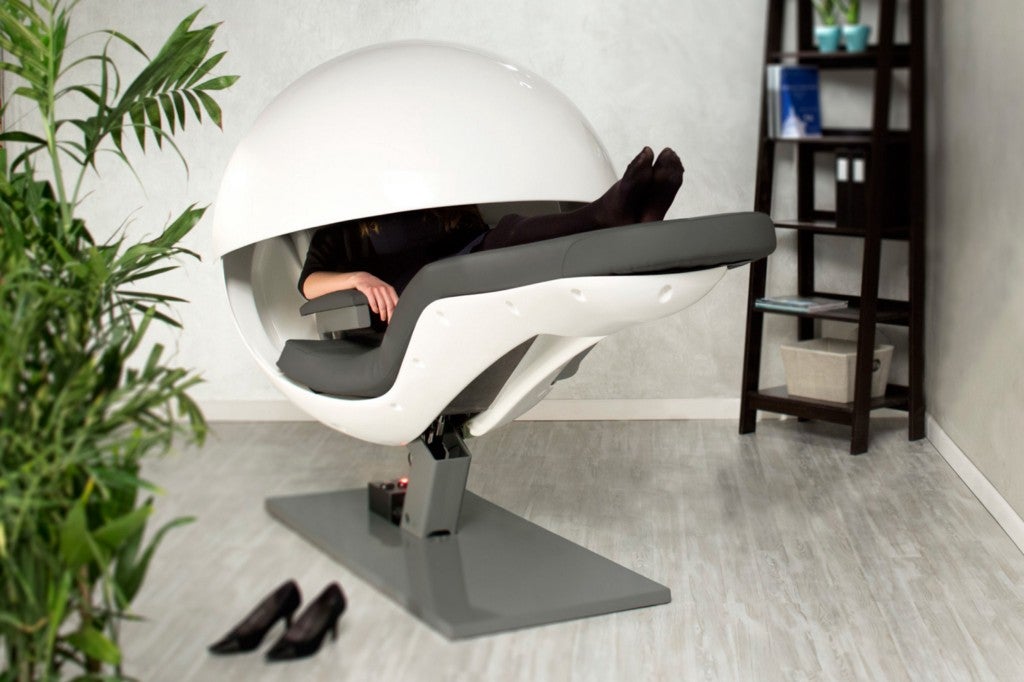The benefits to a mid-workday nap are well-documented and varied. A 2002 study in Nature Neuroscience found taking 30-minute naps could stop a deterioration in performance throughout the workday. Meanwhile, a 60-minute nap could improve performance. Other studies determined that naps make workers less frustrated and impulsive. And from Albert Einstein to George Constanza, many of history’s greatest minds were champions of napping.
Yet, Deborah Moroz, founder and CEO of the HR consultancy HROIC, has only seen a single company with a dedicated nap room in her 26 years in business. Naturally, that was a tech company in San Francisco. “It also had a marijuana room and a breastfeeding room,” Moroz says. “I don’t know if their HR person was joking about the weed room. But they were definitely serious about the nap room.”
The aversion to napping seems to stem from our pressure to always make it seem like we’re working hard, even when that hard work is in vain. “The reality of the modern workplace is Go, go, go. Employees are busting from one meeting to the next. It’s just nonstop,” says Moroz. “I just can't imagine many employers being progressive enough to look at the benefits and get over the cultural hurdles.”
In his paean to workplace napping in The New York Times, Tim Herrera writes:
“Sleeping on the job is one of those workplace taboos — like leaving your desk for lunch or taking an afternoon walk — that we’re taught to look down on. If someone naps at 2 p.m. while the rest of us furiously write memos and respond to emails, surely it must mean they’re slacking off. Or so the assumption goes.”
Your best chance of dispelling an anti-nap bias in your office is to overwhelm your superiors with data about their benefits, says David Lewin, professor emeritus at the UCLA Anderson School of Management and author of The Human Resource Management Handbook. There’s evidence from OSHA and the Department of Labor, for example, that shows most on-job injuries and illnesses occur at the end of the workday. If you frame a midday snooze as a way to combat such accidents and sick days, you might have a shot of implementing a napping protocol.
Lewin also suggests pitching the idea to several C-suite executives within the company. If you can get them napping on a regular basis, “then it could trickle down to the rest of the organization and become policy.”
Even if you get a company to buy into the idea intellectually, however, you still have to battle against the logistical challenges. First, you’ll need a dedicated nap room, and that’s hard to justify in cities such as L.A., where office space is scarce and expensive.
Then you’ll need to establish rules for the nap room, which seems like a human resources nightmare the way Moroz describes it. Things like:
- How many beds?
- Who gets them? Do you have a sign-out sheet like you do for conference rooms?
- What if somebody falls asleep for hours? Do you wake them up, or let them ride it out?
- Who cleans the sheets between each use?
Not to mention the inevitable disputes over what temperature to keep the nap room, how dark it should be and whether people are using the nap room to avoid doing work. If workers get annoyed with each other’s bathroom and kitchen habits, imagine how ornery they’ll be when you start fucking with their sleep. For most companies, it’s not worth the potential benefit, Moroz says.
Not that Moroz opposes the idea. She’s “obsessed” with sleep, she says, and applauds Arianna Huffington for emphasizing the importance of naps and making sleep a larger part of our cultural conversation about health. But she doubts more conventional offices will heed Huffington’s advice any time soon.
“Napping is a great idea. It’d benefit employers in the long run,” Moroz says. “But because of the ‘lazy’ stigma, bringing it to your office is probably going to be an uphill battle.”
